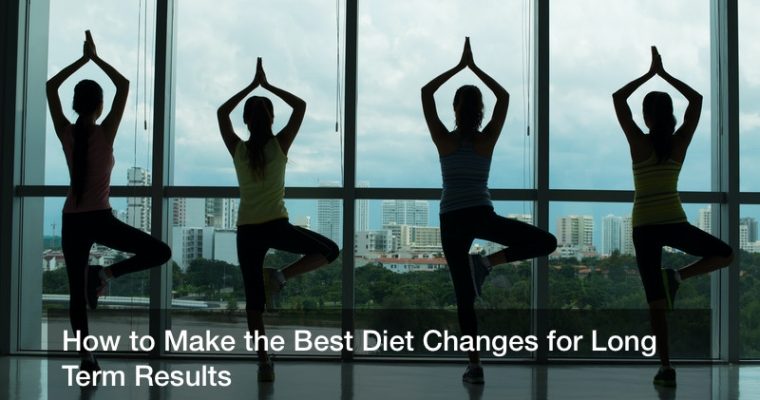
UPDATED 11/24/20
The paleo diet. The Atkin’s diet. The Meditteranean diet. The keto diet. There are countless diet trends and fads hitting the market every other day. These “innovative” diets claim to help you lose weight and keep it off by subscribing to a general idea of health. For example, the paleo diet claims that we should eat more whole fruits and vegetables, along with a heaping side of meat because that’s the kind of food our ancestors ate. The keto diet, however, encourages its users to eat high amounts of fatty foods. Do any of these diets really work?
Like most trends, there is a grain of truth in each one. Fats are essential for your body — in small amounts — and eating more whole foods is a great way to implement higher levels of fiber into your diet. Unfortunately, these trendy diet trends never last because they are inherently flawed: they might work for a little while but it’s unlikely to help you lose weight and keep it off in the long term.
Any physician weight loss center will tell you that making healthy diet changes and getting more exercise is key to losing weight. It isn’t about trying the newest craze or eating so many avocados that you burst. Making diet changes for long term results is not going to be as easy as following a trendy fad but it will certainly pay off in the end.

If you want to make healthy diet changes for long term results, try these tips to stay healthy.
Why diet trends don’t work
The problem with diet trends is that they usually promise fast results. They might also claim that subscribing to their diet will get you results without having to put in any work. It’s important to avoid trends and fads like these since you’re usually only losing water weight. Most of the time, participants in fad diets will quickly gain back the weight that they lost as soon as they stop the diet. In some cases, these fads might actually be bad for your health.
Diet trends have managed to stick around because they do offer some small results. Since many people are paying closer attention to what they eat, they might actually be achieving the calorie deficit one needs in order to lose weight. Unfortunately, restricting what you can and cannot eat will not yield long term results in the end since you will start to crave these foods in unhealthy quantities. This isn’t the information that you want to hear, but it is the truth. Unless you make healthy diet changes for long term results in mind, you won’t be able to lose weight and keep it off.
In reality, most healthy eating changes will not enable you to lose a lot of weight in a short amount of time. Along with light exercise, eating well will only result in someone losing about one or two pounds per week on average. You might not even know that you’ve lost some weight until you go to your next check-up appointment at your OB/GYN or family health provider when you step on the scale.
Now that we know why fad diets don’t work, let’s take a look at healthy diet changes for long term results that actually work.
Don’t skip meals
The latest diet/fitness craze is known as IF, or intermittent fasting. This diet can take many forms but it typically relies on going for long stretches of time without eating foods or high-calorie beverages. This is also known as “fasting” though traditionally, fasting has been used for religious and cultural purposes.

Unfortunately, intermittent fasting isn’t the healthiest way to lose weight. Most nutritionists recommend eating smaller portions of food more regularly to actually lose weight. That includes eating breakfast in the comfort of your dining room furniture and having a small snack between meetings at work. When your body goes into “starvation mode” from fasting, it’s more likely to hold onto those calories and fats since it doesn’t know when it will be eating next. By chomping down on smaller portions of food more regularly, your body knows what energy sources to expect when it becomes routine. This can help you keep off weight in the long term.
Get active
This tip is not all that innovative, but it’s an important factor in maintaining a healthy diet — and losing weight. While there are many diet pills and supplements that claim to work as an appetite suppressant, studies have found that regular exercise is the only tried-and-true form of quelling your appetite.
This seems counter-intuitive. After all, you’re usually more hungry after a long day of hard work. However, exercising is key in releasing appetite suppressant hormones that are vital to completing your physical activity. Studies also suggest that the higher your body temperature, the less hungry you are. These results have been shown to be especially true for cardio activities, like running, swimming, or cycling. Regardless, taking your used boat for sale on the water and angling some sharp turns could be all the movement you need to quell your appetite, especially if it’s a hot day.
Of course, it’s recommended that you do a little bit more than just taking your fishing boat out. The average adult should be exercising for at least 30 minutes per day, four to six times per week. This should also take the form of continuous activity, otherwise, you could say that walking to and from your desk a few times each day can count as your 30 minutes of exercise.

If you’re able to find an activity that you enjoy, exercising is even easier. You don’t have to grind it out at the gym every day to get fit; simply playing a game of pick-up at your local park can get your blood pumping and your body moving. When you enjoy a form of physical activity, it feels less like a chore. This is key in maintaining your weight and diet changes for long term results.
Eat more protein
Studies have also shown that eating more protein can help raise your metabolism and satiate strong appetites. This is key if you find that you’re eating large portions of food at mealtime. While getting more protein might seem like a struggle for vegetarians and vegans, this couldn’t be further from the truth; there are plenty of foods that are packed with healthy proteins, including beans, lentils, spinach, and more.
Eat less processed food

Processed and packaged foods usually contain high levels of sugar and salt to ensure that the food stays good on the shelf. If you eat a lot of processed foods, you might be ingesting more saturated fats and calories than you think.
Not only will eating more whole foods lead to a healthier weight, but it can also make your orthodontist smile. Sugars and fatty foods are more likely to stick around in your mouth and teeth than fibrous foods. Diet changes can not only help you lose weight, but they can also help your smile.
You should also try to achieve a healthy balance when it comes to eating citruses. Oranges, lemons, and limes are all great sources of vitamin C, but the high levels of acidity in these fruits can wear away your tooth enamel over time. Even though citrus tree care might be good for your weight, you need to protect the other aspects of your health as well. Whenever you eat acidic or citrusy foods, try to wash your mouth out with water or brush your teeth soon after.
Eat out less often
Buying ingredients to prepare your own meals means that you will always know what’s going into your body. When you eat out at your favorite restaurant, you never know where the company gets its ingredients. That means you could be ingesting more saturated fats than you think you are.

If you’re finding it difficult to cook at home, try making some of your favorite restaurant meals with a family member. Performing an act in the kitchen is much more fun when you have a friend or loved one at your side.
You might also find that cleaning up your kitchen can help. Those who invest in kitchen remodeling have reported spending more time in the kitchen, though you don’t have to rehaul your entire home to enjoy the benefits. Simply contact a great lighting company to make the space more welcoming and clear more space on your kitchen counters to give you more room to cook and experiment. You’d be surprised at how an easy-to-navigate space can make a chore seem more like a fun challenge.
Drink more water
Sometimes, your body tells you that it’s hungry even though you really just need some water. This is also key since we tend to eat out of comfort or boredom more often than we would care to admit. If you’re feeling bored, try sipping some water to pass the time instead of eating high-calorie foods. Water is key for helping you feel fuller than you are, thereby limiting the number of calories you would eat otherwise. If you’re concerned about the water quality in your home, relying on a local plumber can help quell any uneasiness you have toward drinking straight from the tap.
Work up to larger goals by starting small

You’re not expected to quit all sugar when you invest in diet changes for the long term. Rather, implementing small steps is the best way to ease yourself into a diet change.
You should still be able to indulge on your friend’s birthday and have a glass of wine at the end of a hard day of work. Strictly limiting what you can and cannot eat is a recipe for disaster (pun intended). Start small by incorporating more vegetables into your diet. Then, when you find more vegetables that you like, you can start adding those to your plate instead of a pile of mashed potatoes. These small steps are key in helping you attain realistic goals over a longer period of time. Slow and steady does win the race when you’re making diet changes for long term results.
Diet changes for long term results

Sure, the exact type of diet that works is really about knowledge combined with the right meal replacement choices. If you want to go the low-calorie/no-carb route, go for it. That’s what a good balanced meal and a good healthy diet are all about. And while a number of books and YouTube videos teach you how to do that, there’s no replacing a consistent, calorie-conscious workout routine with a fun, nutrient-dense meal plan, especially when you’re trying to maintain weight loss with an active and healthy life. We’ve all heard that a diet that counts calories is better than a diet that lacks nutrients, but what about filling up on the good stuff while you burn off the bad stuff?
Maybe you need to shed a few pounds and you don’t feel like starting a non-protein-based diet, or maybe your morning runs are starting to feel like too much. Whatever the case, losing weight in just two weeks is something often wished for, but rarely achieved, and it could be harder than it sounds (although challenging nonetheless). Here’s how this amazing diet works: You’ll choose your meal plan at the beginning of the week depending on the age of the dieter. When that two-week anniversary hits, and you feel like a different person and a different body – an awesome one – take a photo of yourself and tweet it.
The real problem with fad diets is that they’re not meant to sustain you for the long term. When you truly want to make an investment in your health, you need to rely on tried-and-true methods for achieving health goals. When you’re ready to make diet changes for long term results in mind, consider these tips when you get started.

